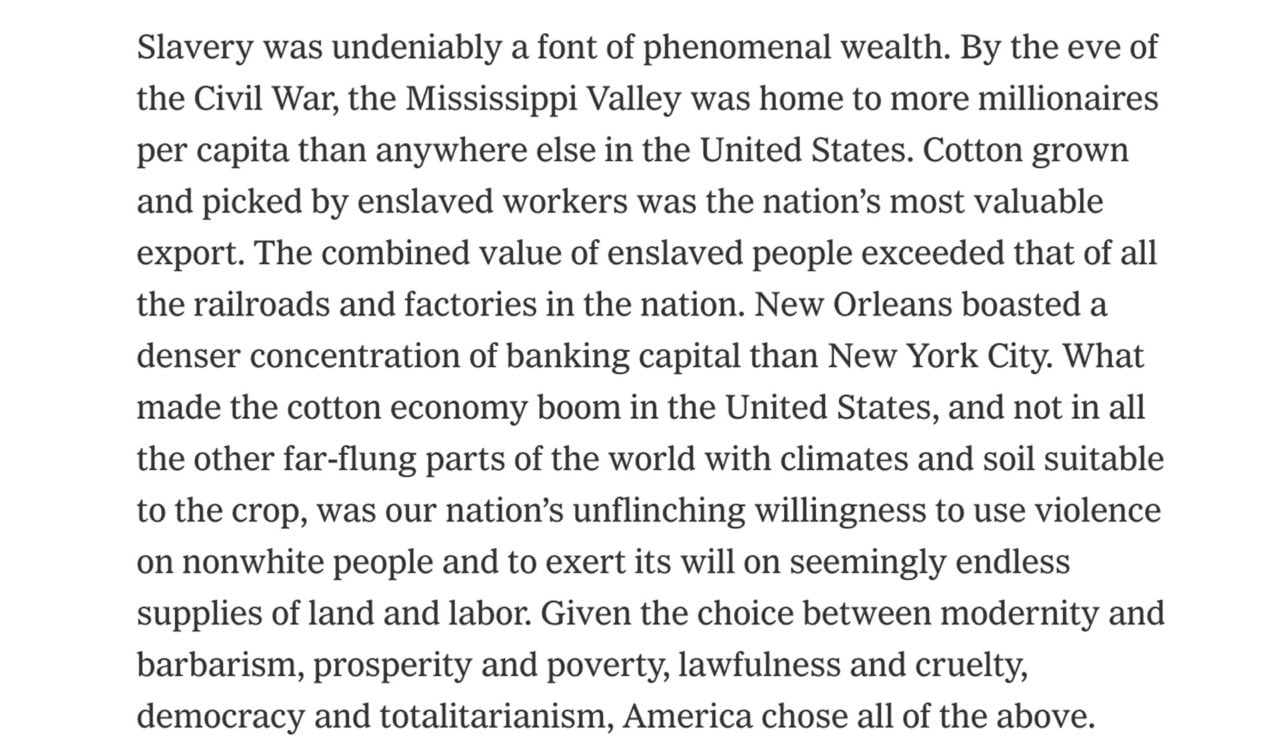“The combined value of enslaved people exceeded that of all the railroads and factories in the nation.” – 1619 Project pg. 32
When my eyes moved across that sentence, I paused. Even as a former social studies teacher, it admittedly took my breath away. In the many ways that we have taught and have been taught about slavery, there has been a distance between us, the enslaved people, and the brutal institution that we fought over and resolved in 1865.
Perhaps in my mind, the Jim Crow Era, the Great Migration, or the Civil Rights movement were the lessons to study and teach—these were the moments that affected the here and now, and shaped the Chicago that we know. And perhaps, that’s why that sentence caught me. I pictured all of the factories and railroads that dot and criss-cross Chicago today, and wondered, how many enslaved people would it have cost to purchase it all?

As educators, we are always looking for new tools and strategies to help students contextualize the world around them so they may one day become informed and effective citizens. In order for our students to engage with the issues of today, it is essential that they have an honest accounting of our country’s past. The 1619 Project from the New York Times and the Pulitzer Center’s supplemental curricular resources are compelling new resources that help us revisit slavery’s impact on our modern society.
Thanks to our partners at the Pulitzer Center, every CPS high school will receive 200–400 copies of the New York Times’ The 1619 Project this week as a resource to help reframe the institution of slavery, and how we’re still influenced by it today—from the workforce management system created to harness enslaved labor and the incredible wealth that came from its unsparing efficiency to the music that you may very well be listening to now.
The stories we tell about our nation’s history matter deeply, and the 1619 Project offers us a new set of stories by “placing the consequences of slavery and the contributions of black Americans at the very center of the story we tell ourselves about who we are” through a collection of essays, stories, poems, and photography that marks the 400th anniversary of the beginning of American slavery.
We are committed to giving our students a historically-accurate, culturally-relevant, and engaging education, and these resources from the New York Times and the Pulitzer Center are invaluable tools for our classrooms. I’m especially thankful to welcome journalist and MacArthur Genius Award winner Nikole Hannah-Jones to host a conversation at Whitney Young High School which will be livestreamed on October 8 through our website and social media channels.
Although only our high school social science teachers will receive booklets and physical materials, everyone can access these supplemental curricular resources from the Pulitzer Center that include a reading guide and activities for student engagement.
It is my sincere hope that parents and families explore the project with their children; teachers examine these curricular materials and share it with their students; and principals support staff and students as they tackle this subject.
Related Stories
13 March 2025
Sharing the Incredible Career of a CPS Crossing Guard
Ms. Phillips plays an integral role in helping ensure that students are safe as they travel to and from school.
17 January 2025
Looking Back on the Incredible Career of Our Chief Schools Officer
Congratulations on your retirement, Chief Sanders!
17 January 2025
Transforming School Safety: Celebrating the Career of Jadine Chou
Reflecting on the remarkable impact of Jadine Chou, CPS’ Chief of Safety and Security, as she prepares to depart the District.
19 December 2024
Celebrating Gratitude in Network 11
This network-wide Gratitude Challenge was an amazing success.





